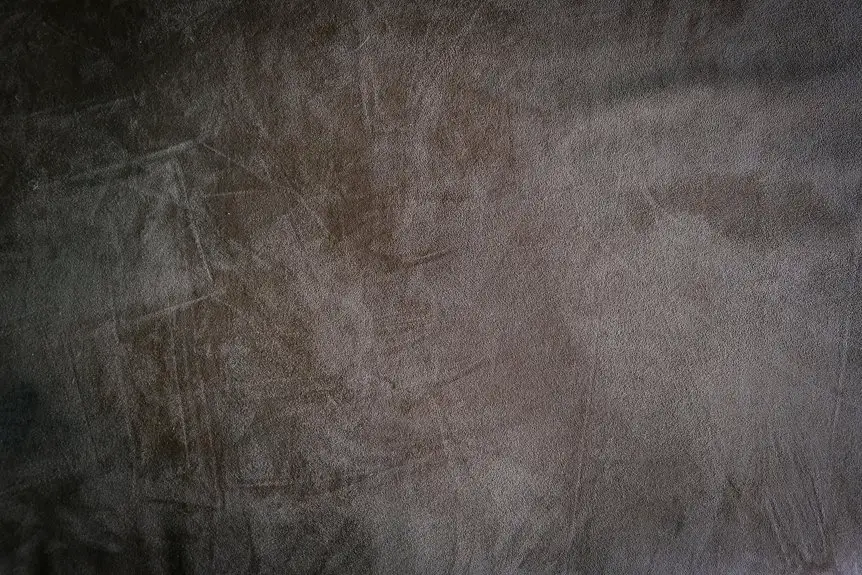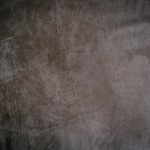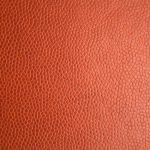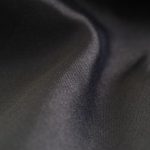You can use Scotchgard Fabric Protector on real suede, but you need to be careful. Suede is delicate and can absorb liquids quickly, so applying Scotchgard creates a protective barrier that repels spills and dirt without changing the texture—if used properly. Always test it on a hidden spot first, spray lightly in a ventilated area, and avoid over-saturating. If you want to keep your suede looking great, there are key tips and precautions worth knowing.
Table of Contents
Key Takeaways
- Scotchgard Suede & Nubuck Protector is safe and effective for real suede when applied correctly and designed specifically for suede materials.
- Always test Scotchgard on a small hidden area of suede to check for any texture or color changes before full application.
- Apply the protector evenly in a well-ventilated space, avoiding over-saturation to prevent stiffness or discoloration of the suede.
- Proper cleaning of suede before applying Scotchgard is crucial to ensure maximum protection and avoid trapping dirt or moisture.
- Scotchgard creates an invisible barrier that repels liquids and dirt, extending the lifespan of delicate real suede items without altering texture.
Understanding the Characteristics of Real Suede
Although real suede feels soft and luxurious, it’s also delicate and easily damaged by water, stains, and rough handling.
You should know that suede is made from the underside of animal hide, giving it a unique napped texture that’s prone to absorbing liquids and dirt quickly.
Because of its porous nature, water spots and stains can set in fast, causing permanent marks if not treated properly.
You’ll find suede is less durable than full-grain leather and requires gentle care to keep its appearance intact.
When you handle real suede, avoid scrubbing or rubbing aggressively, as this can damage the fibers and alter its texture.
Understanding these characteristics helps you appreciate why suede demands special treatment.
How Scotchgard Fabric Protector Works
Since real suede is so sensitive to water and stains, protecting it properly can make a big difference in maintaining its look.
Scotchgard Fabric Protector works by creating an invisible barrier on the surface of the material. When you spray it on, it repels liquids and prevents dirt from soaking into the fibers. This means spills bead up and can be wiped away before causing stains.
Scotchgard forms an invisible barrier that repels liquids and stops dirt from penetrating fabric fibers.
The product uses fluorochemical compounds that bond to the fabric, reducing its absorbency without altering the texture or appearance. By applying Scotchgard, you help shield your suede from everyday messes and extend its lifespan.
Just remember to apply it evenly and allow it to dry fully for the best protection results.
Is Scotchgard Safe for Use on Suede?
How can you be sure that Scotchgard won’t damage your real suede? Scotchgard products designed specifically for suede and leather are generally safe when used correctly.
They create a protective barrier without altering the material’s texture or color. However, you should always test the product on a small, hidden area first to check for any adverse reaction.
Make sure you apply it in a well-ventilated space and follow the instructions carefully, avoiding oversaturation. Using a Scotchgard formula not intended for suede might risk stiffening or discoloring the fabric, so selecting the right product matters.
When applied properly, Scotchgard can help preserve your suede’s appearance while repelling stains and moisture, making it a cautious but effective option for suede care.
Potential Risks of Using Scotchgard on Suede
You might notice changes in your suede’s texture after applying Scotchgard, which can feel less soft or slightly stiff.
There’s also a risk of staining or discoloration, especially if the spray isn’t applied evenly.
Plus, using Scotchgard could affect the material’s breathability, potentially impacting its natural protection.
Suede Texture Alteration
Although Scotchgard offers strong protection, applying it to real suede can change the fabric’s delicate texture.
When you spray it on, the suede’s soft, velvety nap might become stiffer or feel rougher. This happens because the chemicals in Scotchgard create a coating that can alter how the suede fibers lay.
You might notice that the plush, smooth surface you love turns slightly flattened or uneven. Over time, repeated applications could make the suede look less natural and reduce its signature softness.
If you want to keep your suede’s original feel, you’ll need to be cautious with any protective sprays. Testing on a small, hidden area first can help you see how your suede reacts without risking noticeable texture damage.
Staining and Discoloration
Besides altering the texture, Scotchgard can also cause staining and discoloration on real suede. When you apply it, the liquid may darken the suede unevenly, leaving blotchy spots. Over time, these stains might become permanent, ruining the look you wanted to protect.
Here are three key risks you should consider:
- Uneven Color Changes – Scotchgard can alter the natural hue, creating noticeable patches.
- Water Rings – Moisture trapped during application might leave visible watermarks.
- Yellowing Effect – Some formulas cause a yellow tint, especially on lighter suede.
If you want to keep your suede looking fresh, test any product on a hidden area first. This step helps you avoid unexpected discoloration before treating the whole item.
Breathability and Protection Issues
While Scotchgard aims to protect your suede, it can compromise the material’s breathability, leading to moisture buildup and potential damage.
When suede can’t breathe, trapped moisture may cause mildew, odors, or even weaken the fibers over time. You might think protecting your suede means applying a strong barrier, but this barrier can also block air circulation, which suede relies on to stay fresh.
Using Scotchgard could leave your suede feeling stiff or altering its natural texture. If you want to keep your suede looking and feeling its best, consider products specifically designed for suede or test any protector on a hidden area first.
That way, you avoid risking long-term harm while still shielding your suede from stains and spills.
Proper Application Techniques for Suede Protection
To protect your real suede effectively, you need to apply Scotchgard carefully and correctly.
Applying Scotchgard to real suede requires careful and correct techniques for optimal protection.
Start by cleaning the suede gently to remove dirt and dust. Next, test the Scotchgard on a small, hidden area to verify it doesn’t alter the color or texture. When you’re ready, spray the protector evenly from about 6 to 8 inches away, avoiding heavy saturation.
Follow these steps for best results:
- Clean: Brush off debris and verify the suede is dry before application.
- Test: Spray a small spot first; wait for it to dry and check for changes.
- Spray Evenly: Apply a light, uniform coat; avoid soaking, then let it dry naturally.
This method preserves your suede’s look while adding protection.
Alternatives to Scotchgard for Suede Care
If you prefer not to use Scotchgard, you can find several effective alternatives to protect your suede.
One popular option is a silicone-based water repellent spray, which creates a breathable barrier without altering suede’s texture.
You might also consider natural beeswax-based protectors, which offer water resistance while nourishing the material.
Another choice is specialized suede and nubuck sprays formulated to repel stains and moisture safely.
Before applying any product, test it on a small, hidden area to verify it doesn’t darken or damage the suede.
These alternatives can help you maintain your suede’s look and feel while providing reliable protection.
Just remember, consistent care with the right product will extend your suede items’ lifespan effectively.
Tips for Maintaining Suede After Treatment
Choosing the right protective spray is just the first step in keeping your suede looking great.
Selecting the proper protective spray is only the beginning of preserving your suede’s beauty.
After treatment, you need to maintain it properly to extend its life and appearance. Here are three essential tips:
- Brush Regularly: Use a soft suede brush to remove dirt and revive the nap. Brush in one direction gently to avoid damaging the fibers.
- Avoid Water Exposure: Even with protection, water can stain suede. If it gets wet, blot it immediately with a dry cloth and air dry naturally.
- Store Properly: Keep your suede items in a cool, dry place away from direct sunlight. Use breathable fabric bags instead of plastic to prevent moisture buildup.
Common Mistakes to Avoid When Protecting Suede
Although protecting suede can seem straightforward, many people make avoidable mistakes that compromise its appearance and longevity.
First, don’t apply Scotchgard or any protector on dirty suede—you must clean the surface gently before treatment.
Avoid saturating the fabric; a light, even spray is enough. Over-application can cause discoloration or stiffness.
Also, don’t use protectors designed for smooth leather or other materials; suede needs specific formulas.
Another common error is applying protection indoors or in humid conditions—always spray in a well-ventilated, dry area.
Finally, don’t neglect a patch test on a hidden spot to check for color changes or damage.
Expert Recommendations for Suede Preservation
When you want to keep your suede looking its best, following expert recommendations is key. Suede is delicate, so proper care helps maintain its texture and appearance.
Proper suede care is essential to preserve its delicate texture and keep it looking its best.
Here are three essential tips experts suggest:
- Use a Suede-Specific Protector: Apply a spray designed for suede, like Scotchgard Suede & Nubuck Protector, to shield it from water and stains without compromising texture.
- Brush Regularly: Use a soft suede brush to remove dirt and restore the nap. Brush gently in one direction to avoid damaging fibers.
- Avoid Water Exposure: Water can stain suede. If it gets wet, blot it dry with a clean cloth and let it air dry naturally, away from heat sources.
Following these steps helps you preserve your suede’s beauty and extend its lifespan.
Frequently Asked Questions
Can Scotchgard Change the Color of Real Suede?
Imagine a gentle rain altering autumn leaves’ hues; Scotchgard can sometimes darken real suede slightly. You shouldn’t expect drastic changes, but test a hidden spot first to avoid unwanted color shifts on your suede.
How Long Does Scotchgard Protection Last on Suede?
Scotchgard protection on suede usually lasts around 3 to 6 months, depending on wear and exposure. You’ll want to reapply it regularly to keep your suede looking fresh and protected from stains and moisture.
Is Scotchgard Effective on Oily Stains on Suede?
Scotchgard helps repel oily stains on suede but isn’t foolproof. You’ll still need to act fast with blotting and proper cleaning. It reduces stain absorption but doesn’t guarantee complete protection against oils.
Can I Apply Scotchgard on Dyed Suede?
Like a knight guarding its castle, Scotchgard can protect dyed suede, but you should test a hidden spot first. It might slightly alter color or texture, so proceed carefully to keep your suede looking sharp and vibrant.
Does Temperature Affect Scotchgard Application on Suede?
Yes, temperature affects Scotchgard application. You should apply it in a well-ventilated area between 50°F and 80°F. Too cold or hot can cause uneven drying or reduce effectiveness on suede surfaces.
- How to Spot Clean Upholstery: A Guide to Removing Stains Fast - July 8, 2025
- How to Deodorize Upholstery and Eliminate Lingering Smells - July 8, 2025
- How to Safely Disinfect Upholstery Without Damaging Fabric - July 8, 2025







